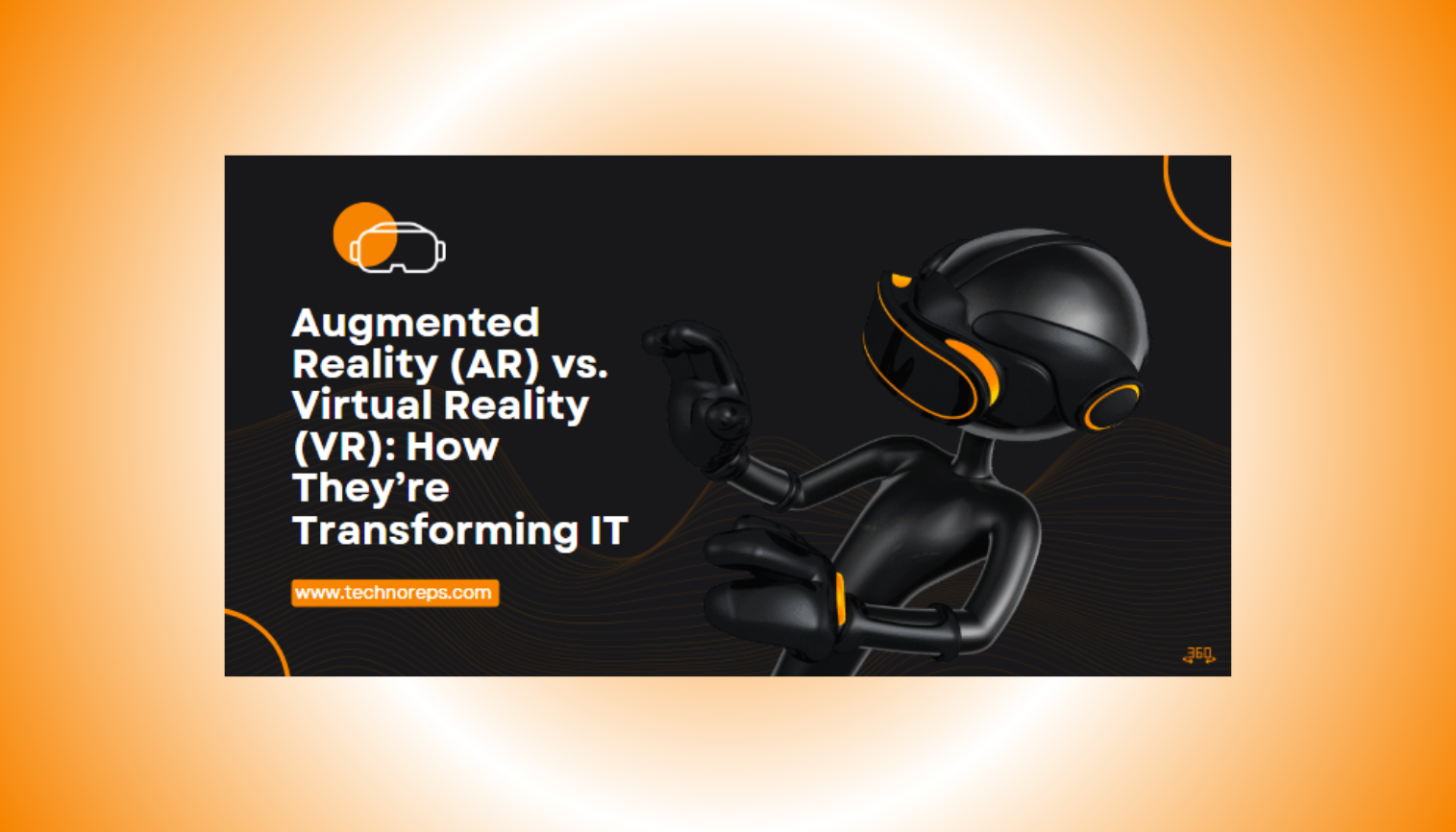Augmented Reality (AR) and Virtual Reality (VR) are revolutionizing the IT landscape by enhancing user experiences, optimizing business operations, and transforming industries. While AR overlays digital content onto the real world, VR creates a completely immersive digital environment. This blog explores their impact on IT and how businesses can leverage these technologies.
What is Augmented Reality (AR)?
AR enhances the real-world environment by overlaying digital information through devices such as smartphones, tablets, and AR glasses. Examples include:
Retail & E-Commerce: Virtual try-ons for clothing and accessories.
Healthcare: AR-assisted surgeries and patient diagnostics.
Manufacturing: Real-time assembly instructions for workers.
Key Benefits of AR in IT
Enhanced User Engagement: Interactive experiences boost customer satisfaction.
Real-Time Data Insights: Businesses can analyze customer interactions in real-time.
Remote Assistance: Technicians can troubleshoot issues from anywhere.
What is Virtual Reality (VR)?
VR creates fully immersive environments using headsets like Oculus Rift, HTC Vive, and PlayStation VR. Industries utilizing VR include:
Gaming & Entertainment: Immersive gaming experiences and virtual concerts.
Education & Training: Virtual classrooms and hands-on training simulations.
Real Estate: Virtual property tours for potential buyers.
Key Benefits of VR in IT
Immersive Training: Employees can undergo risk-free training simulations.
Cost Efficiency: Reduces the need for physical prototypes.
Enhanced Collaboration: Remote teams can work in virtual environments.
How AR & VR Are Transforming IT
1. Enhancing Customer Experience
Businesses use AR/VR to create personalized and engaging customer experiences. For example, IKEA’s AR app allows customers to visualize furniture in their homes before purchasing.
2. Streamlining IT Support & Maintenance
AR enables remote troubleshooting, reducing downtime and increasing efficiency. VR, on the other hand, helps IT professionals simulate complex system repairs.
3. Advancing Cybersecurity Training
Companies use VR simulations to train employees on security threats, phishing attacks, and cyber risk management.
4. Revolutionizing Software Development
IT developers use VR for 3D modeling and immersive coding environments, allowing for more efficient software creation.
Future Trends in AR & VR for IT
AI Integration: Enhanced AR/VR applications powered by artificial intelligence.
5G & Edge Computing: Faster processing speeds for seamless experiences.
Metaverse Growth: Companies investing in virtual worlds for business operations.
Final Thoughts
Both AR and VR are driving significant transformations in IT by improving efficiency, engagement, and innovation. Businesses that integrate these technologies can gain a competitive edge in the digital landscape.







